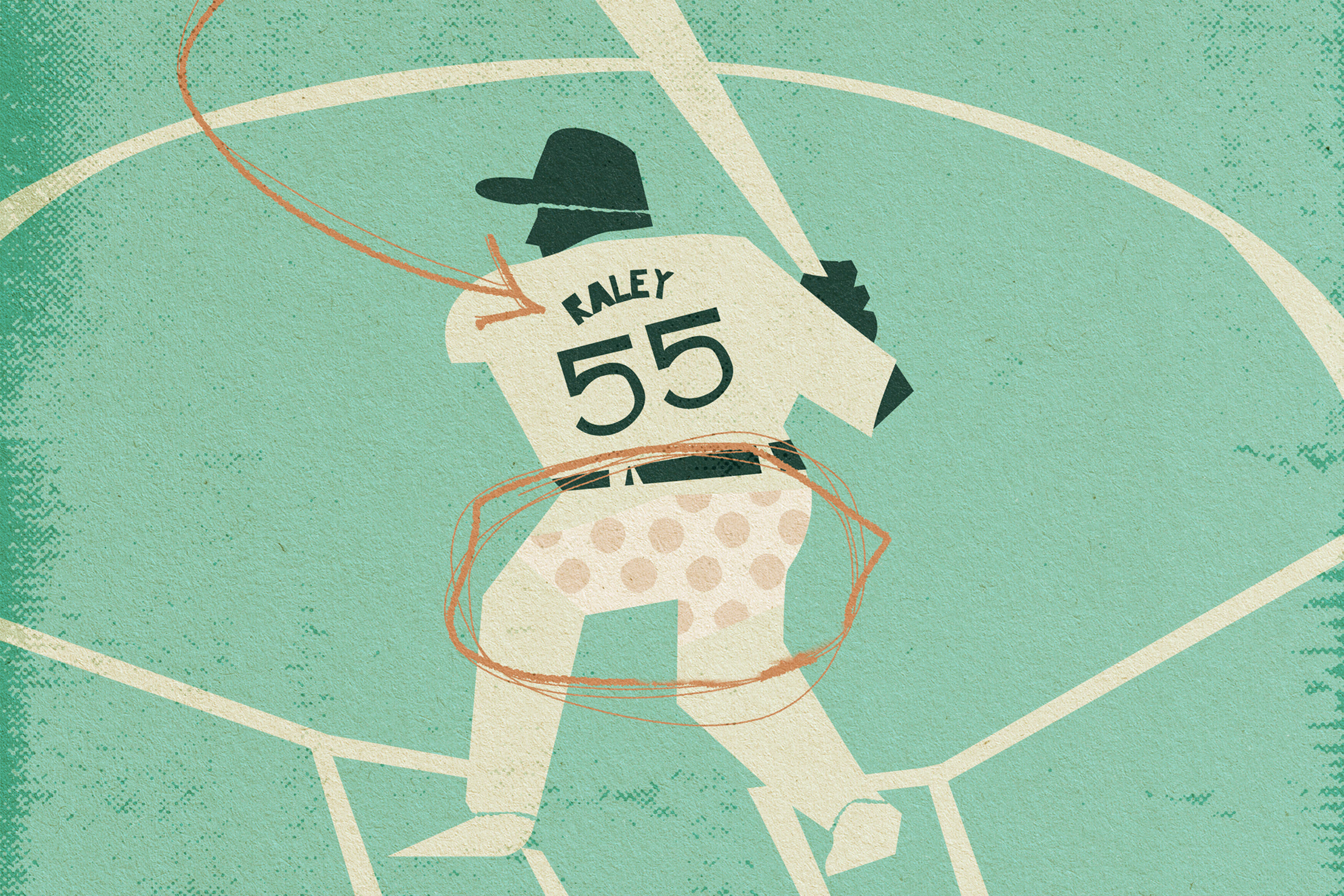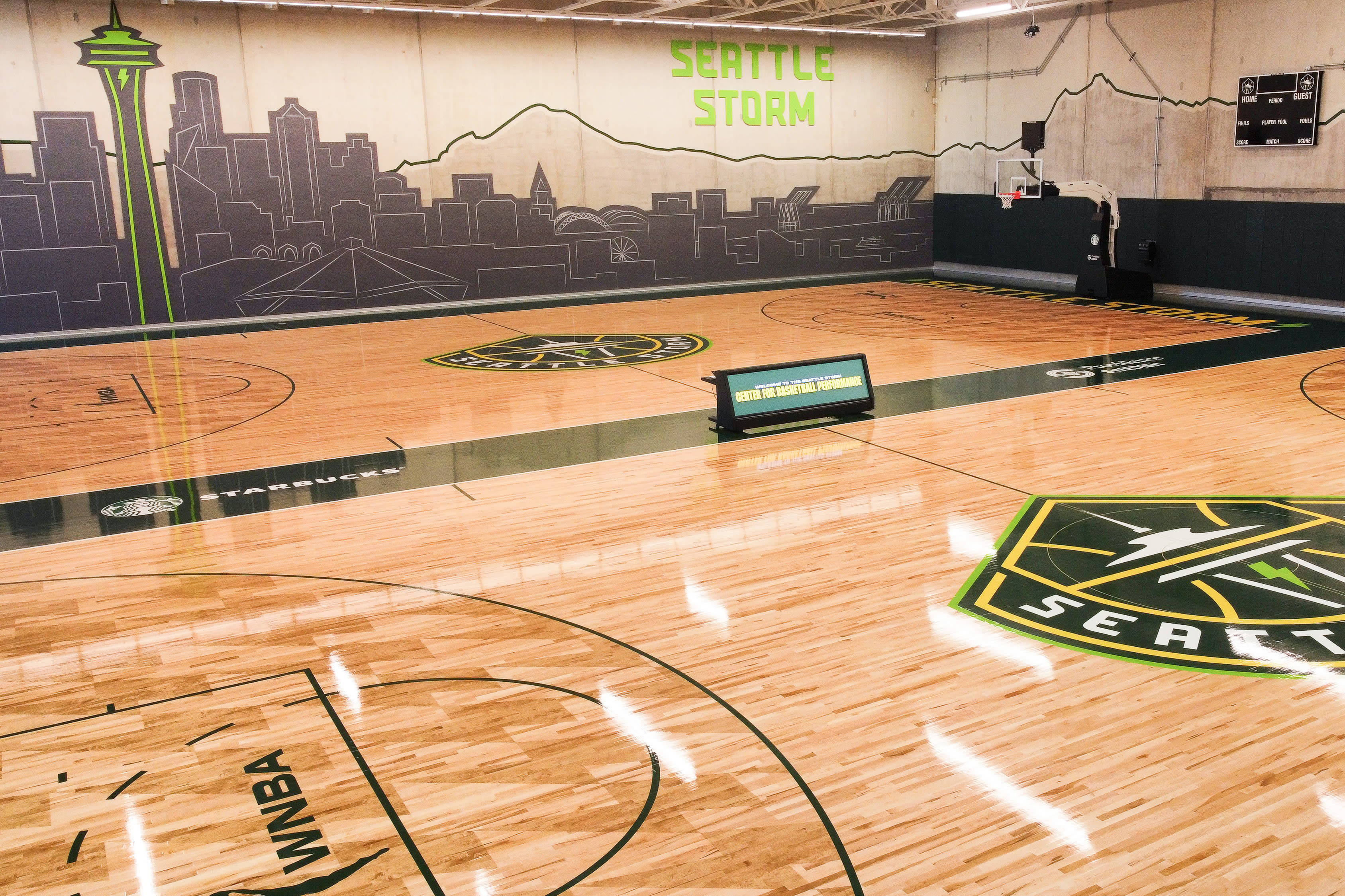The Sports Bra and Rough and Tumble Are Just the Beginning
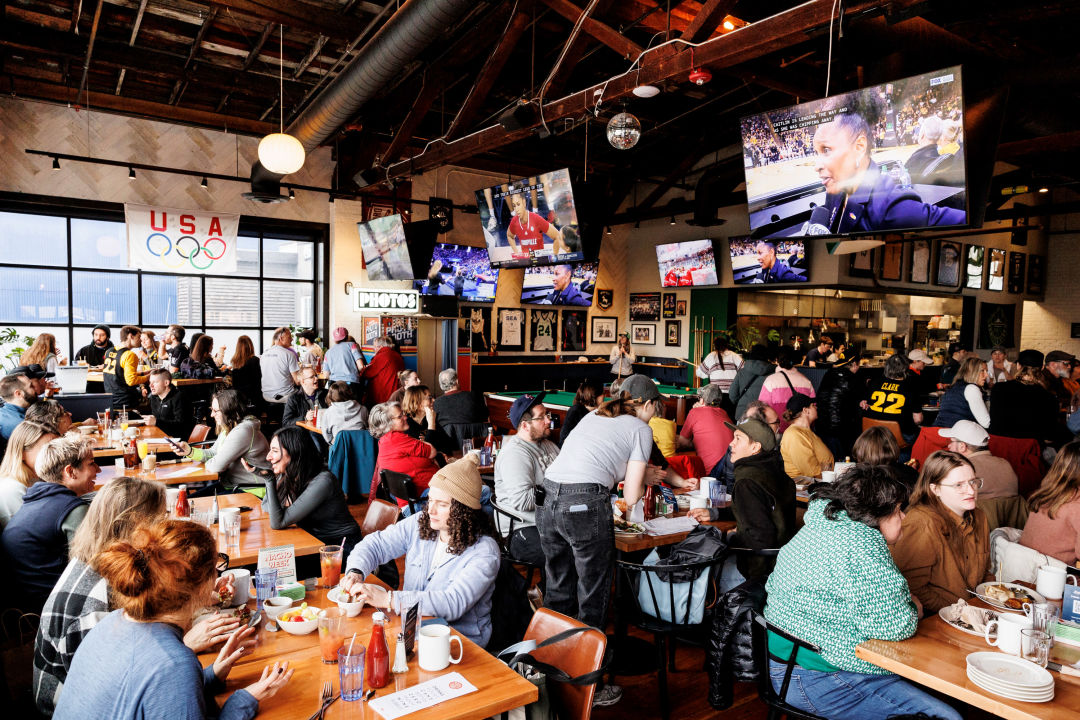
Image: Brooke Fitts
For Jen Barnes, it was the OL Reign semifinal against the Washington Spirit in 2021. She figured a postseason game with a Seattle team would be easy to find at a local bar. She called around and found she was mistaken. Eventually she found a spot that intended to put on the Reign game, but only after an out-of-market football game ended.
Down in Portland, Jenny Nguyen and some friends went to a sports bar in 2018 to watch the NCAA women’s basketball final. “There’s 30-plus TVs in there and none of them have the game on,” she remembers. A server was happy to let them change the channel; Nguyen and her crew screamed and high-fived when Notre Dame sank a three-pointer with less than a second on the clock to beat Mississippi State. Then she looked around and noticed nobody else in the bar was watching. Later, she realized they had watched the entire game with the sound off.
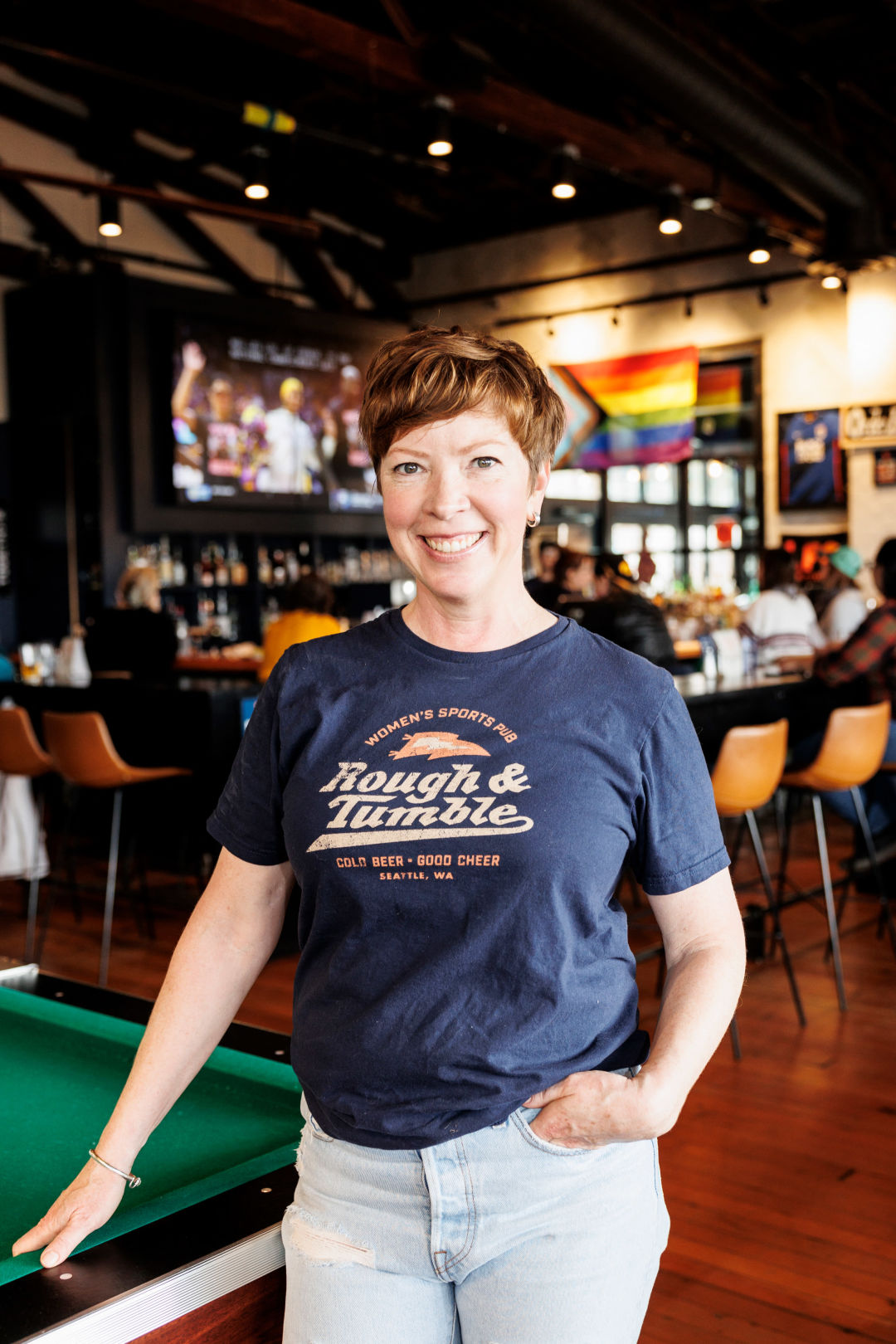
Image: Brooke Fitts
Until 2022, modern civilization had produced razors, rom-coms, cigarettes, cars, deodorant, pens, even yogurt aimed at a female audience. Not to mention metric tons of overly sweet alcohol. But exactly zero sports bars. Things changed in April of that year, when Nguyen—a college basketball player turned career chef—opened the Sports Bra, a bar in Northeast Portland that shows women’s sports, and women’s sports only.
Meanwhile, 150 miles to the north, Barnes had a similar plan in the works. In December 2022, Barnes opened a bar called Rough and Tumble here in Seattle. Her location in Ballard focuses on women’s games, but is also happy to put on the Kraken or the NFL.
Suddenly the universe had two women’s sports bars, both in the Northwest. And the universe was just getting started. A year after the Sports Bra blew the opening whistle, a spot called Icarus opened in Salem, Oregon, serving wings and women’s sports (as well as men’s). Like-minded venues are opening in New York and Minneapolis.

Image: Brooke Fitts
The world’s first two women’s sports bars have a lot in common: good beer, great nachos, menus full of scratch ingredients, and cocktails with sporty names like “Buzzer Beater.” They’re both way family friendly, not to mention sisters-in-arms, giving fans of the Seattle Storm or Portland Thorns the same opportunity to commune—to scream and emote and experience in a room full of similarly enthused strangers—that Blazers or Sounders fans take for granted. Their success has unleashed a powerful new understanding that this market share is real.
Even if the bars themselves are pretty different.
It wasn’t exactly a surprise that soccer fans filled Rough and Tumble for the first few matches of the 2023 Women’s World Cup.
Or maybe it was? When Barnes, a former executive with decades of high-level corporate and startup experience, was formulating Rough and Tumble, she met with skepticism at every stage—from business plan to financing to real estate. Even people in her personal life who loved the idea in theory worried she might lose big on a sports bar catering to women.
Watch parties for the cup’s early stages drew more people than the 165-seat bar could hold. But as the tournament progressed, the time difference kicked in. Games played in Australia and New Zealand meant most kickoffs between midnight and 3am Pacific time. Washington bars can’t serve alcohol past 2am. And forget trying to staff the kitchen.
The final game, between England and Spain, was set for 3am Seattle time on August 20. Rough and Tumble planned to be open. Barnes figured the bar would be “kind of full.” After all, the US wasn’t in the championship match for the first time since 2007.
By 1:30am, she says, a couple hundred people were waiting on the dark sidewalk. When doors opened an hour later, the coffee and nonalcoholic micheladas flowed. The staff set up a cereal bar.
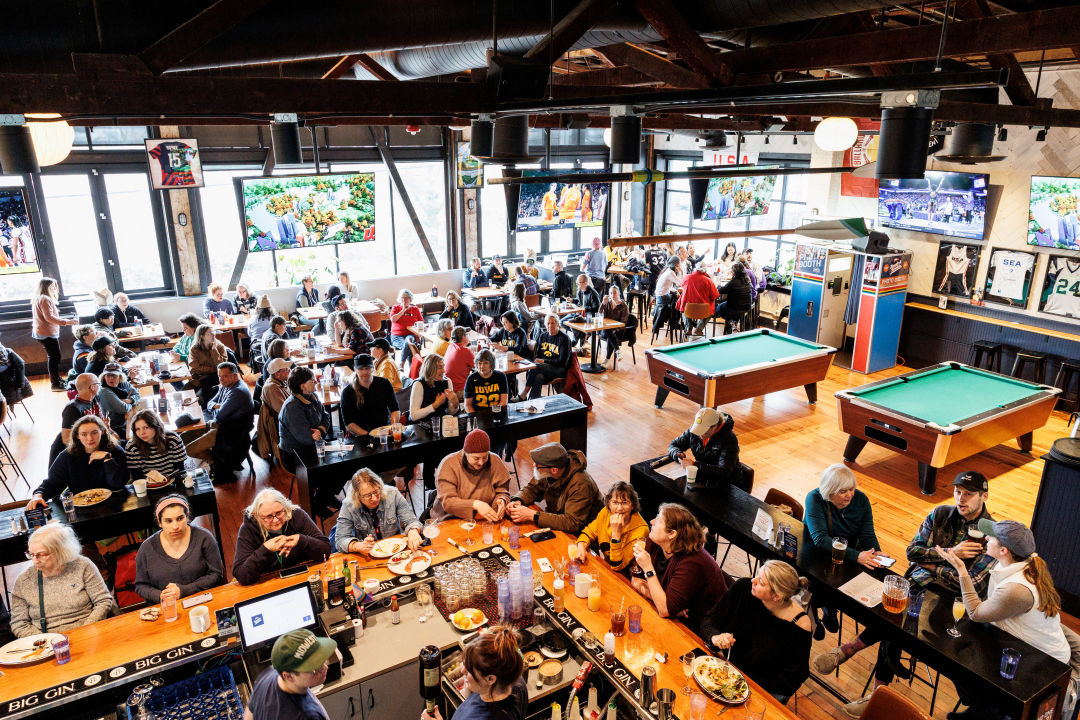
Image: Brooke Fitts
Rough and Tumble can certainly hold a crowd. The 1927 building was originally a sawmill, converted over the years to a soaring room full of timber beams, whitewashed walls, and a thicket of 18 TVs. Two pool tables and some tastefully framed jerseys anchor the space; cardboard figures of players like Quinn and Rose Lavelle pop up in corners like unexpected friends. When Rough and Tumble is packed, its energy reaches stadium-like levels—albeit with way nicer bathrooms.
The vastness is less ideal on quiet evenings. Sometimes programming strays from Barnes’s goal of a 50–50 split between men’s and women’s athletics. Still, a million subtle cues differentiate this sports bar from a traditional den of broham. On Sundays, women in jerseys order mimosas by the pitcher to cheer on the Seahawks; the phrase “Let’s Effing Go,” a cleaned-up version of the US women’s soccer team’s rallying cry, shows up so frequently in this building, it’s practically a design motif.
The Sports Bra and Rough and Tumble are both queer-owned; it’s likely not a coincidence they both attract some sports-agnostic customers who appreciate a bar that values inclusivity. On my first visit to Rough and Tumble, I watched an elderly foursome order glasses of red wine. They seemed oblivious to the college basketball happening overhead, though keenly focused on their order of the bar’s resplendent twice-baked nachos, roughly the size of a toaster oven.
This table notwithstanding, interest in women’s sports has leapt upward. According to Nielsen, viewership of last year’s NCAA women’s basketball final more than doubled from 2022. Last fall, the WNBA had its most-watched playoffs in 16 years. Still, “fans are conditioned that it’s not available,” says Barnes of women’s sports broadcasts. Even listings harbor a pink tax; Rough and Tumble’s staff has to search team and league individual websites to build a schedule of games. During the first year, they weren’t always prepared (or staffed) when certain games drew crowds. “Literally nobody had ever done this before,” says Barnes. “It is impossible to underscore enough how abnormal it is to be able to watch a women’s game in a sports bar.”
Much like its namesake garment, the Sports Bra is snug: 40 seats and five TVs. Memorabilia covers the walls; jerseys and soccer scarves hang from cords stretched across the ceiling, a clothesline of empowerment. Christmas lights remain up on Valentine’s Day. Two years in, the place has already acquired the pleasant, personable shabbiness of an essential (and kid-friendly) neighborhood dive. One rainy Friday afternoon, much of the clientele seems to be here more for the wings or the tempeh reuben than for a glimpse at the LPGA Drive On Championship. No surprise, given Nguyen’s culinary background.
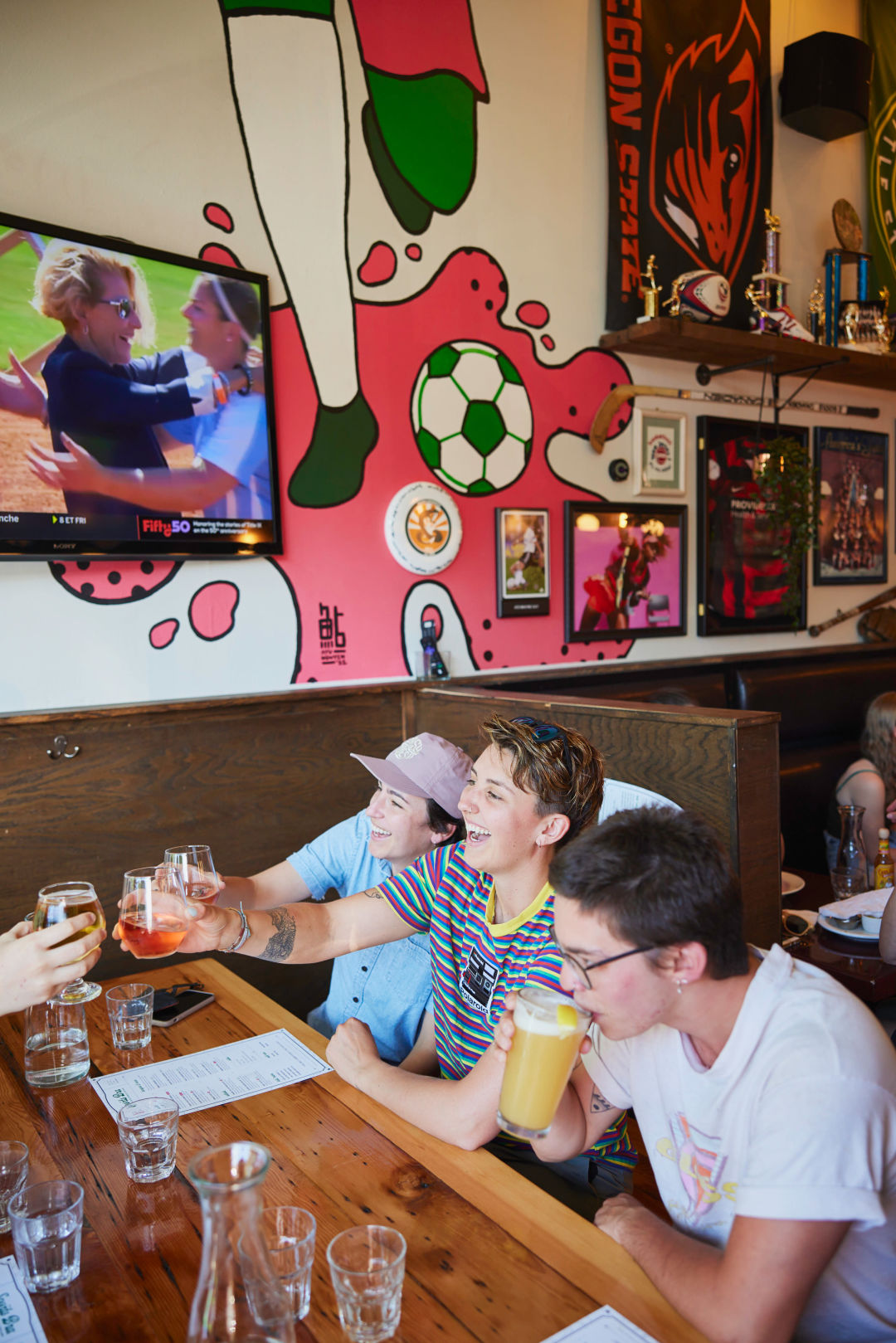
Image: NashCo Photo
The Bra was decidedly less chill when Serena Williams played her final match, in September 2022. So many people wanted to see history happen, Nguyen suspended her usual rule that occupants need to be paying customers. The staff reconfigured tables and chairs to fit as many standing-room-only spectators as possible. As the match continued, they propped the door open so people on the sidewalk could watch. Onlookers cupped their hands against the front windows to see the action on TV.
Just before it ended, Nguyen ran downstairs to get tissues. “I didn’t know if anyone else was going to cry, but I was definitely going to cry,” she says. After the loss that capped one of humankind’s legendary tennis careers, tables passed the tissue boxes around, strangers hugged each other, and Nguyen wondered whether anyone else on the planet, outside the walls of the US Open, was having this same experience.
Nguyen got turned down for three loans when she set out to transform the Sports Bra from an inside joke with her friends to a real-life establishment. She graciously points out she was a first-time business owner who sought financing in the depths of Covid. But banks tend to dislike unproven concepts. The Bra brought in nearly $1 million in revenue in its first eight months. This year, Nguyen sat on a panel at SXSW called “Why Investing in Women’s Sports Is a Win.”
More than one person has commented that Rough and Tumble’s large-scale polish reflects Seattle, while the divier spot dripping with DIY spirit feels very Portland. That feels overly simple. It feels more like proof that women’s sports bars don’t succeed because the owner happened to tap into one great vibe or lucky location.

Image: Brooke Fitts
The Northwest might have been the proving ground, but these bars seem poised to become a national norm. Nguyen and Barnes have both received “hundreds” of emails and calls from people who want to open something in their home cities. Traditional bars feel the impact, too. The Reign clocked dozens of bars and restaurants across Washington that hosted watch parties when the team made the postseason in 2023—a huge increase from the year before. When Rough and Tumble fills up for important games, says Barnes, the staff refers overflow customers to nearby Ballard bars that now have the same matches on TV as well. “They’ve become known as Rough and Tumble refugees,” Barnes says.
Women’s games should have been on bar screens years ago. And it should have happened because of the fans. Or the community. Or the athleticism. But this is sports, after all. And the revenue has spoken. So let’s effing go.

